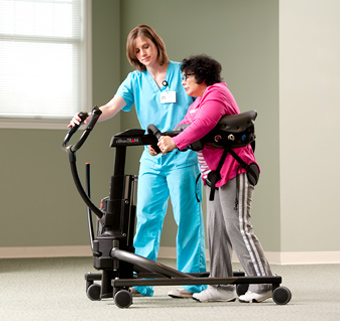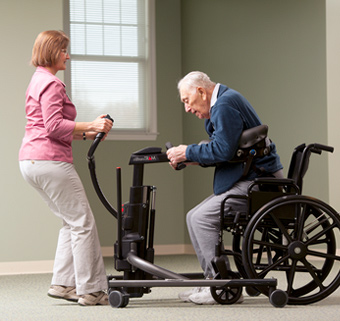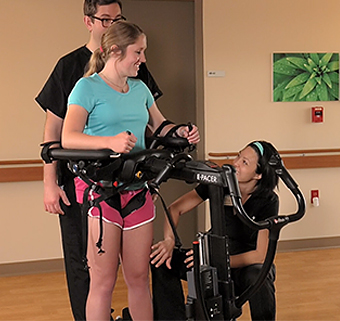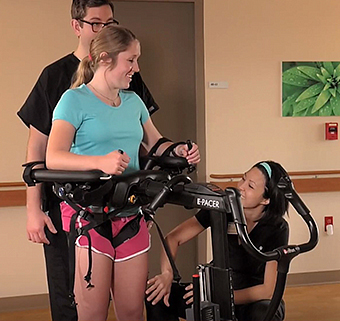Tips from a TRAM Advocate
| July 2013Recently Rifton had a conversation with a complex rehab provider (who wishes to remain anonymous) serving clients in a mid-western state. Because he and his staff have been buying so many Rifton TRAMs for their customers, we wanted to find out who these people were and what needs the TRAM was filling for them. Following are excerpts from our conversation:
 Rifton: What have you found is unique about the Rifton TRAM, and why are your customers buying the TRAM in such quantities?
Rifton: What have you found is unique about the Rifton TRAM, and why are your customers buying the TRAM in such quantities?
Provider: You have to take your client out of the “lift” mindset. Do this visually, by demonstration. If people look at the TRAM and think “lift,” they need to get into it and realize it’s not a patient lift. It’s so much more. We place a lot of emphasis on the restorative gait training through supported ambulation, and on the scale function to document and prove that a client is progressing. The clinician must be able to document in the client’s file how much weight they are able to bear, and increase that load. That’s a winner.
Rifton: Who have been the most enthusiastic adopters?
Provider: Our best response has come from group homes, rehab centers, and institutions where people want to maintain the level of ability they have and even improve it. Who wants to lose ability?
Rifton: How do you bring around those who are skeptical initially?
Provider: How do I convert the non-believers? Get them into it. Everyone who has been in a TRAM wants one.
Rifton: There are a few states where Medicaid has refused to cover the TRAM (we’re working on those). In your experience, where else is the money coming from to purchase a device like this?
Provider: Cash sales are the next wave. It is about to impact our industry. All the trade publications are saying: learn it, understand it, and embrace it. The people who are now aging, or whose children need the TRAM, are willing to pay for quality devices. Their expectations are higher, and they are less willing to settle for mediocrity in quality-of-life issues and in the products that are part of their family member’s routine or therapy. Again, the restorative gait training aspect is a strong seller. That will be the convincer, when it comes to fund-raising or grant writing. But the bottom line is this: if you can provide a life-changing product and deliver it with consistent quality as you are doing with the TRAM, money will be made available through some source. Go out and find it. Insist on finding it. Your clients will thank you again and again.




